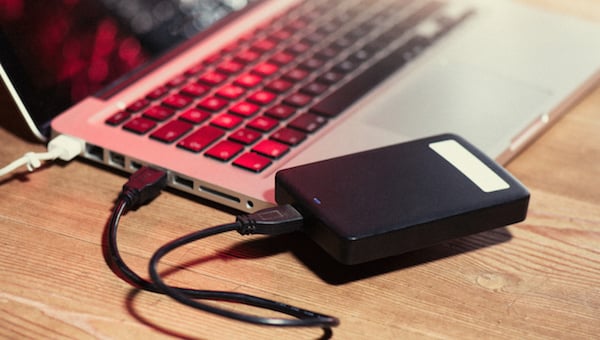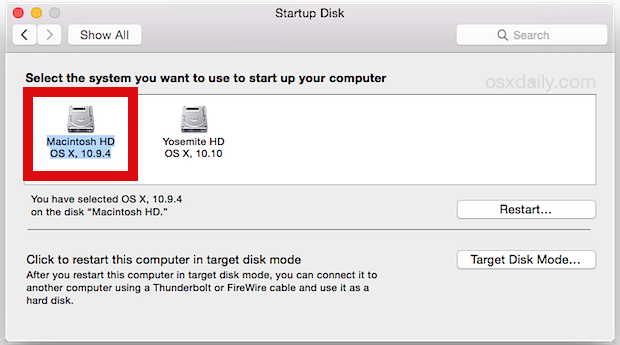

- #Selecting your boot drive mac os mac os x
- #Selecting your boot drive mac os drivers
- #Selecting your boot drive mac os software
- #Selecting your boot drive mac os download
#Selecting your boot drive mac os mac os x
Finally, if you want to run a parallel copy of Mac OS X on a virtual machine, you too will need a working installation file of an older Mac OS X. Also, you may have noticed your Mac’s performance went down right after the last update. To begin with, some of your apps may not be working properly (or simply crash) on newer operating systems. There are many reasons that could point you to this radical decision.
#Selecting your boot drive mac os download
So, you’ve decided to download an older version of Mac OS X. Now, check out our more solutions below.įeatures described in this article refer to the MacPaw site version of CleanMyMac X. It removes only safe-to-delete files and is notarized by Apple. Read more here.So here’s the tip for you: download CleanMyMac X to refresh your Mac’s drive automatically. A single NetBoot image, on the other hand, can be used to boot multiple computers at the same time.īombich Software, the maker of the popular Carbon Copy Cloner software, has a good guide for troubleshooting the NetBoot process. NetBoot images can be a convenient alternative to lugging around external hard drives, each of which will only work with one computer at a time.
#Selecting your boot drive mac os software
If you have such a server set up on your network, you can have an OS X installation on a disk image that contains troubleshooting software and other useful utilities, and hold the "N" key down on the problematic machine while booting to force it to search for a NetBoot server to load. In addition to the boot options listed above, OS X supports booting from networked disk images that are provided by a NetBoot server (properly configured OS X server). This will let you run any disk utility software on the drive if needed, and check for drive functionality. For advanced troubleshooting of hard drives, you can boot with the "T" key held down which will essentially turn your computer into a FireWire hard drive and allow you to connect it to any other computer to mount as an external drive. Those options are the ways you can force a system to boot off a given device, and can be used for pretty much any Mac. This interface should show all drives including USB, FireWire, and SD cards (on the new MacBooks). Start up the computer and hold the "Option" key to bring up a simple interface that will list available boot devices, with a restart and a "go" arrow. This is perhaps the easiest way to select an available boot device. Booting and holding the "X" key will have the system search for an OS X installation to boot from, starting first with the internal drive and subsequently searching for OS X installations on optical and external media. This one may be beneficial if your system is constantly booting into a secondary non-OS X operating system. Holding this key at start-up will force the system to search for a suitable boot volume in the optical drive. When Apple first started using optical media to load the operating system, it only used CD-ROMs, so the "C" key was reserved for commanding the system to boot off the optical drive. To bypass the boot drive, restart the computer and hold the Options-Command-Shift-Delete keys all at once with an alternative boot device connected to the system. If for some reason you cannot boot from an external drive or CD ROM, one method of ensuring the system will not load off the main boot drive by default is to bypass it so it will locate an alternative device to use.

However, regardless of the specific problems, there are several steps you can try to either force the system to boot off the main drive or bypass it and select an alternative means of booting for troubleshooting purposes. Other times boot devices may not appear is if there is a problem with either the device, or with the hardware you are using to boot the device.


#Selecting your boot drive mac os drivers
There may be times when boot devices are not immediately ready at startup, or where there is a problem such as the inability to read a boot DVD which can prevent booting even when you use the "Startup Disk" utility to select it as the default partition.Īdditionally, while both OS X and the Boot Camp utilities and drivers in Windows will let you select which operating system to restart into, this is not the case with unsupported operating systems such as Linux and Unix. If you have multiple operating systems installed on your computer, or if you are trying to boot off various utility or other boot disks, you may run into problems where using an alternative or desired boot device is not a straightforward process.


 0 kommentar(er)
0 kommentar(er)
